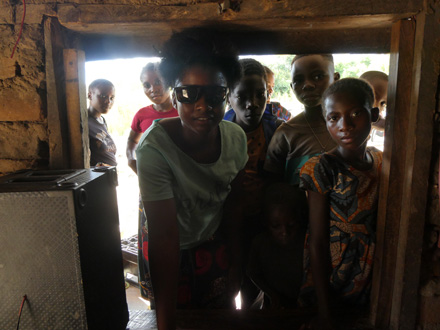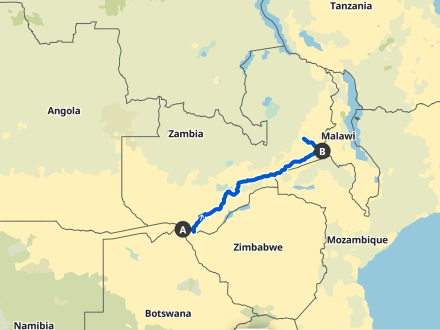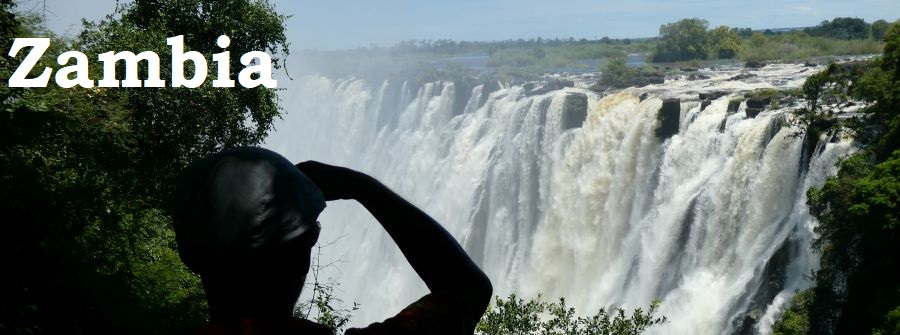
Cycling Zambia offers some world class highlights, tasty food and veryfriendly folks. Don’t miss out on the Victoria falls and a National Park or two!
Kazungula (Border with Botswana) – Livingstone – Monze – Lusaka – Luangwa Bridge – Nyimba … Chipata … South Luangwa NP … Chipata – Mchinji (Border with Malawi)
998km cycled
Feb 12 – Mar 12, 2023
The border
The beautiful Kazungula Bridge over the Zambezi River was a glorious entrance to Zambia, and the border crossing was a hassle-free experience with exit and entry stamps in the same building. Kurt as a Swiss citizen paid 50 US$ for a 30-day Zambia/Zimbabwe KAZA visa, while Darina, as an EU citizen, got 30 days in Zambia for free.
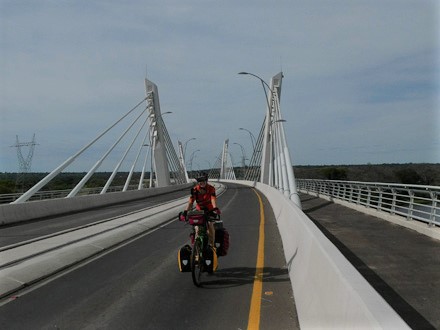

One of the Seven Natural Wonders
We headed straight for Livingstone to view one of the Seven Natural Wonders of the World: Victoria Falls. As the Zambezi River forms a 1.7km curtain thundering down 100m, you can’t help but marvel at the wonders of Mother Nature, especially in the rainy season.
70% of the falls are actually in Zimbabwe, but with such a volume of water at this time of year, Zambia boasts better views with less mist.



Zambezi River Cruise
Further upriver we hopped on a boat for a Zambezi sunset cruise, viewing hippos, crocodiles, elephants, kingfishers and Egyptian geese in the Mosi-oa-Tunya National Park. The boat was so empty, there was a waiter for every guest, and the pace was so slow we both found ourselves drifting off into a pre-dinner snooze. Not the most riveting excursion on this trip!

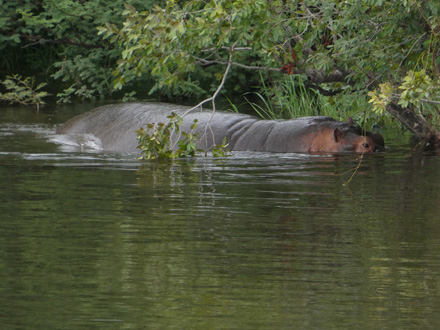

Trade bikes for flying trikes!
Livingstone is famous for all the activities it offers in and around the falls and our next activity certainly ticked all the boxes. We opted for a microlight flight over the falls, which finally took place after being cancelled no less than six times due to inclement weather conditions. Standing on the runway, it was a little disconcerting to see this little flying trike motoring down the runway to pick us up. E.T. eat your heart out!
Well, we were in very safe hands with our competent South African pilot, Anton and words can not describe the absolutely awesome experience it was to view the Falls from this perspective. Come to think of it: Wouldn’t that be novel … to see the rest of Africa from above, without rattling on horrific corrugated washboard surfaces, pushing through deep sand tracks and being blown off the road by speeding trucks?!
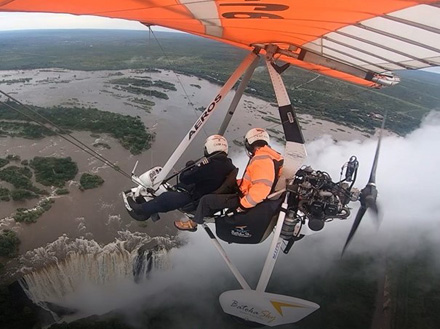
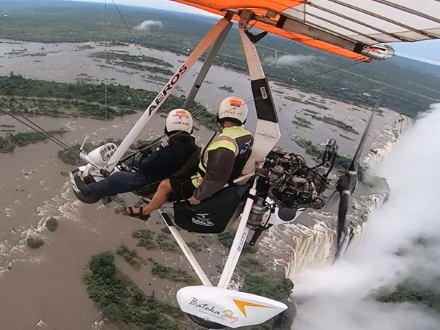
Zambezi Crocodile
Zambezi River crocodile in all its forms appeared on the menus in Livingstone and needless to say we had to try it out. It was like a mix of chicken and tuna and a refreshing change from the usual chicken, beef or fish options.


We also took the time to visit the local crocodile farm – a retirement home for big maneaters, who were “rescued” from the Zambezi and tributaries, after having killed up to 35 locals and fishermen. Some interesting facts about crocodiles is that they descend from the same family as the dinosaur (archosaurs), have hardly evolved for 200 million years and can go a full year without eating! Even at three months, these tiny little babies are well able to snap, as Kurt discovered when he tried to make one smile!

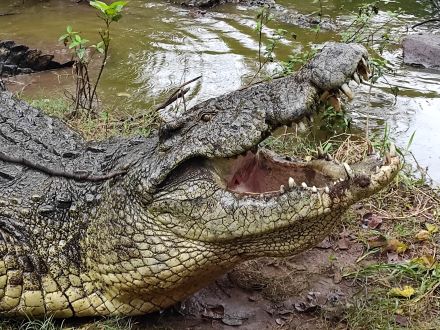
We’re not alone!
Zambia is the first country on this trip where we, as cyclists, were not the exception rather than the rule. What a joy to share the road with so many cyclists of all ages!
Darina’s obsession with luggage weight quickly paled into insignificance as we passed cyclists transporting everything from 50kg of flour to bundles of charcoal/firewood and live chickens and pigs!
It is not unusual to see a whole family out cycling together in Switzerland. In Zambia too… But in Zambia they are all on the same bike!
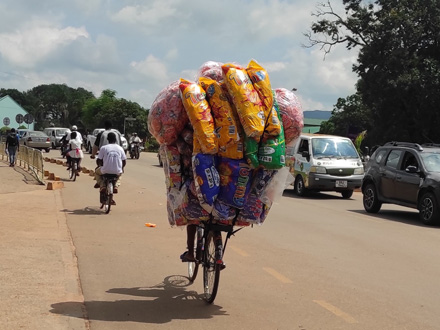

Our route
Our route in Zambia led from Victoria Falls to the capital, Lusaka, and then on the Great East Road to the Malawi border. The initial flat terrain with corn, soya, sunflower and ground nuts gave way to forestry in the hills and more tropical vegetation with mangoes and bananas as we approached the border.


What broke the monotony of this 1,000km stretch was the tasty food and interesting edibles at the roadside stalls. And, of course the Zambians themselves, who ensured that we received an exceptionally friendly welcome as we cycled through the numerous villages en route.
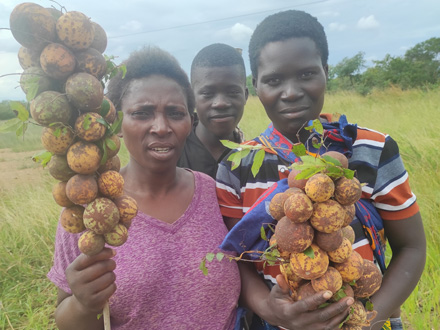

While many Zambians live from subsistence farming, we found them to be quite content with their lot. There is enough land to go around and beyond the corn, cassava and ground nuts that they grow for themselves, many farmers have a couple of “cash crops” like tobacco, soya and sunflower that they can sell to supplement their income.
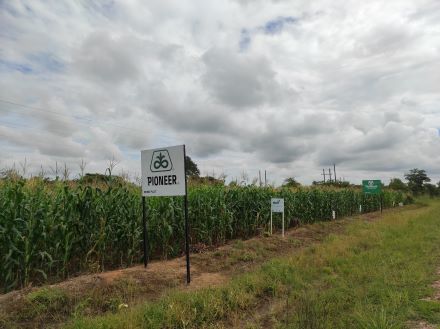

There is a great move by the latest government to curb corruption and education is now free at primary level. Women empowerment is to the fore in Zambia and International Women’s Day is even a national holiday. Actually, women appear to do all the work: childrearing, fetching water from the well, gathering firewood, cooking, cleaning, shopping, selling at the market and thankfully also make it to leadership positions in many national banks and international companies. Meanwhile, the men hang out in the shade drinking alcohol and wondering where they are going to source enough money to pay the lobolo to the family of their future bride!

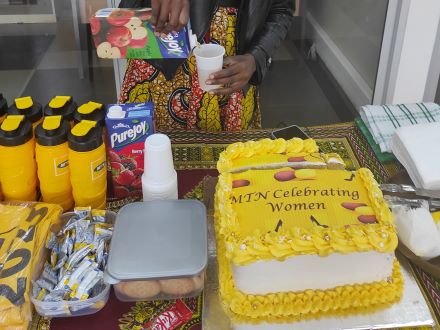

Banking problems
Zambia is a cash-based economy and our spondulicks were running very low when we rocked up to the first and last ATM for miles around at Nyimba. Alas, it wouldn’t accept our cards… so we invested our last few Kwatcha in a couple of bus tickets to Chipata, the next big city.
Now there’s a city that has its bike lanes in order and one that many European countries could learn from! And the motorbike taxis come complete with a sunshade!

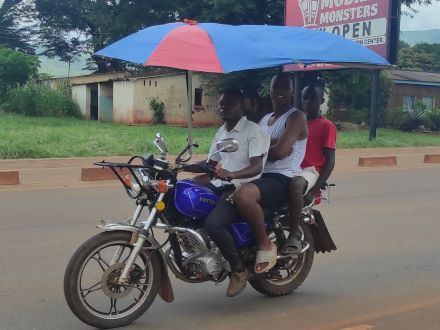
The icing on the cake!
If Zambia started on a high with Victoria Falls, our finale in South Luangwa National Park was certainly the icing on the cake! Where packs of wild dogs roam freely, and prides of “sociable” lions lounge invitingly on the dirt trails. Where even in the rainy season we were graced by the presence of an array of jungle animals and birds … and pretty much had the place to ourselves.

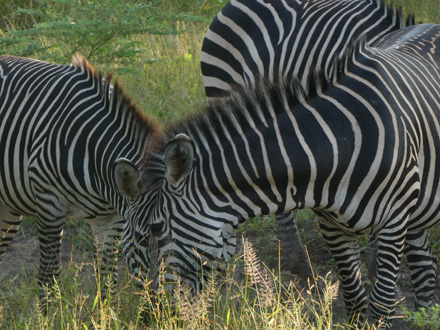
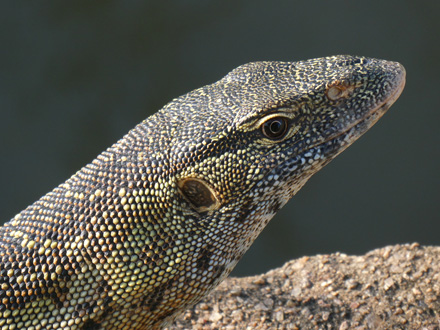








Food
Typical dishes in Zambia didn’t vary much from neighbouring countries, with chicken, goat or beef served with nshima (corn porridge), rice or chips. For variety, we did have fish and a selection of greens including rape and leaves from sweet potatoes, okra and pumpkin. This would be typical for breakfast, dinner or lunch and the dishes were always very tasty! Such a dish generally cost 30-40 Kwacha (1.30-1.75 Euros) at the market or from 4 Euros in a restaurant.
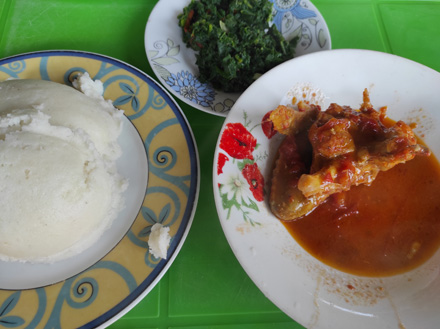

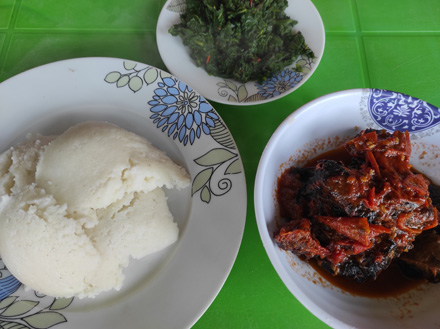
On numerous occasions we sought mopane worms, a local delicacy, but alas, they are not available in rainy season. Actually, they are caterpillars that we had photographed in South Africa, not knowing they were edible!

Rainy season
Zambia has a good six months of rainy season and we could nearly have set our watches by the rhythm the weather took. Every day around 2pm the clouds started gathering. By 2:30pm the thunder was rumbling in the distance and there was the odd flash of lightening. At 3pm, the rain wasn’t far off and if we were lucky it was just a half-hour downpour. The advent of Cyclone Freddy did bring a lot of rain and flooding, and we very kindly received an upgrade from our tent to a room when it really bucketed down in Chipata.
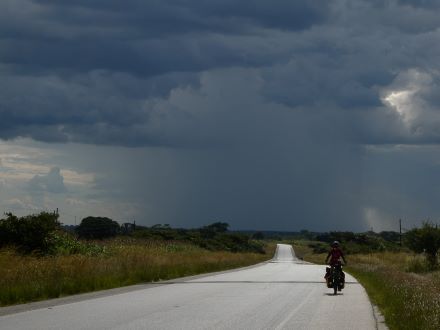
Accommodation
Campgrounds generally cost between 8 and 10 US dollars/person, but with rainy season we were often happy with a basic room that you could get from 120 Kwacha (7 US$). The amazing thing was that mosquito nets were always provided, and Zambia prides itself in having successfully tackled malaria these past few years.
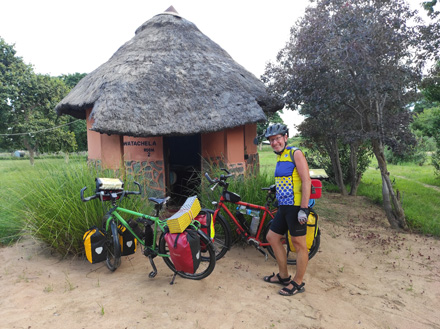
Travellers
On this stretch we bumped into Amos (@_lebruitdesglacons) from France cycling south from Cairo to Cape Town, and Ayse (@aysekocalarr) from Turkey headed south from Tanzania on foot.
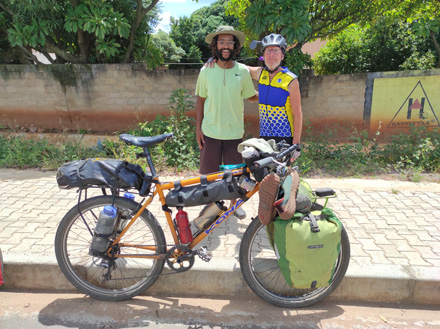

The verdict
Zambia certainly does have its highlights and outside of the rainy season, there would be quite a few more national parks well worth visiting. Cycling is easy, food is tasty, people are friendly and hey! – it is home to one of the Seven natural Wonders of the World!
The children came out tops with their ‘Howareyou’ chant that gathered speed and momentum as we approached, triggering a chain reaction from every hut in the village. The sheer joy on their faces was a sight to behold, and their little dance of achievement as we waved back had us grinning the whole way to Malawi! Thank you Zambia!
